During the Second World War, the aircraft carrier had distinguished itself as the new queen of the sea. A warship to replace the battleship as the symbol of naval supremeacy. In this article we look at the largest aircraft carriers of World War 2 and rank the top ten! Want to see where your favorite carrier ranks? Keep reading below!
Number 10 – Shokaku Class
Full Load Displacement – 32,120 Long Tons
Length – 766’ 6” (233.6m)
Beam – 95’ 9” (29.2m)
Draft – 29’ 4” (8.9m)
Speed – 32.5 knots
Aircraft – 72
The next ship on our list is filled out by the most powerful carriers used by Japan during the Second World War as well as one of the most powerful designs in the world at the time of their launch. These carriers were the two ships of the Shōkaku class. As naval treaties began to break down, Japan gained the opportunity to build larger aircraft carriers during the late 1930s. Japan desired a ship that featured a large airgroup, greater protection, heavier firepower, and a high top speed. By 1937, the designs were largely complete and two ships were ordered, to be named Shōkaku and Zuikaku. Construction began a year later in 1938.
The Shōkaku class carriers were impressive warships. Though not as large as Akagi or Kaga, they made for it by being a much more advanced design. The featured a sleek, hydrodynamic hull that gifted them impressive speed and a long range. Protection was enhanced through a more thorough internal arrangement and the addition of a comprehensive torpedo belt, giving them greater resistance to underwater explosions. The ships carried two hangars that allowed them to carry over seventy aircraft, giving them a powerful airgroup to strike at targets. Together, these capabilities made the Shōkaku class one of the most powerful carriers in the world. Even as new carriers entered service around the globe, the Shōkaku class remained potent adversaries.
Both ships of the Shōkaku class entered service in 1941. Though sunk after just three years, the ship’s took part in most of the important battles at the start of the war. Aircraft from the sisters attacked shore installations at Pearl Harbor before supporting attacks in the South Pacific. Other notable actions involved the Indian Ocean raid as well as the Battle of Coral Sea. It was here that the sisters were dealt heavy damage to their airgroups. This forced the pair back to Japan for resupply and repair. This prevented them from taking part in the Battle of Midway. The decimation of Japan’s carrier forces left the Shōkaku class to shoulder the burden as best they could until 1944 when both ships were lost in separate battles.
Number 9 – Yorktown Class
Full Load Displacement – 32,060 Long Tons
Length – 827’ 5” (252.2m)
Beam – 114’ 2” (34.8m)
Draft – 25’ 11” (7.9m)
Speed – 32.5 knots
Aircraft – 60
Next up on our list we have the Yorktown class carriers of the United States Navy. Though these carriers were actually on the smaller side and two of them were lost during the Second World War, one of the ships survived the conflict. During the war, she received several upgrades the grew her displacement to over 32,000 tons. This carrier was the legendary USS Enterprise, the most decorated warship in the United States Navy. While a member of the Yorktown class, we will focus on Enterprise due to her modifications.
Like her sisters, the design of Enterprise was heavily based on experiments with the Navy’s earliest carriers. The United States arrived at the conclusion that the capability to carry a large, flexible airgroup and the ability to house them in a high speed, durable hull were the most desirable traits for a fleet carrier. The Yorktown ships, despite being over 10,000 tons lighter than the Lexington class carriers, could almost carry the same number of aircraft thanks to an efficient hull layout and large flightdeck. Powerful machinery could still provide a respectable top speed. Originally, the ships displaced just under 26,000 tons. However, in 1943, Enterprise underwent a major overhaul. The addition of new equipment along with the installation of blisters on either side of the hull increased she size, leading in an increase in displacement. These upgrades enhanced the capabilities of Enterprise to a level well beyond her sisters.
The Yorktown class, and especially Enterprise, had distinguished careers in the Second World War. The ship’s saw heavy service, helping the United States through the most difficult part of the war when the United States was still recoiling from Japan’s opening assault. Hornet carried out the Doolittle raid on Japan while Yorktown served admirably during the Battle of Coral Sea. Yorktown then took part in the pivotal battle of Midway along with Enterprise. Together the sisters eliminated all four Japanese carriers at the cost of Yorktown being lost as well. Hornet was then sunk the following year, leaving Enterprise to carry on the war. She did this, serving in every major battle of the war until the final surrender of Japan.
Number 8 – Implacable Class
Full Load Displacement – 33,550 Long Tons
Length – 861’ 3” (262.5m)
Beam – 118’ 9” (36.2m)
Draft – 27’ 11” (8.5m)
Speed – 33.8 knots
Aircraft – 80
The Royal Navy is represented by the next ships on our list, the two ships of the Implacable class fleet carriers. The Royal Navy already had a successful class of carrier in the Illustrious class. However, they desired to introduce two more carriers of a new improved variant. The Implacable class would feature more powerful machinery and the capability to handle a larger airgroup while still retaining a high level of protection. The Implacable class were authorized In 1938 and became the most powerful carriers in the Royal Navy during the Second World War.
The Implacable class carriers were impressive warships. Being based on the successful Illustrious class, the Implacable class featured a level of protection that set them apart from their contemporaries. These British armoured carriers were intended to operate closer to hostile shorelines than contemporary carriers. The need to provide protection against larger, more powerful land-based aircraft influenced the Royal Navy’s decision to build stronger, more armoured carriers. This trend continued to the Implacable class. However, the Implacable class overcame some of the design limitations of earlier ships, including more aircraft storage and a more powerful powerplant. Overall, the ships were extremely well rounded ships and very successful designs.
Both ships of the Implacable class were laid down in 1939 and entered service five years later in 1944. The ships were immediately put into action operating off the Norwegian coast. Following operations there, the sisters were then transferred to the Pacific. They carried out extensive airstrikes against Japanese targets and even against the home islands. Following the war, they alternated between the reserve fleet and as training ships. The sisters were finally scrapped in the mid 1950s.
Number 7 – Graf Zeppelin
Full Load Displacement – 33,550 Long Tons
Length – 861’ 3” (262.5m)
Beam – 118’ 9” (36.2m)
Draft – 27’ 11” (8.5m)
Speed – 33.8 knots
Aircraft – 42
While the history of aircraft carriers during the Second World War is dominated by those of Japan, Britain, or the United States, there were other notable examples. Germany had recognized the importance of aircraft carriers as far back as 1933. Rapid design work had produced a capable fleet carrier design and by 1935 the design had been fine tuned into the preliminary design that would become the Graf Zeppelin Class. Being new to the construction of aircraft carriers, Germany studied foreign designs, sending several service members to Japan to study their carriers. By 1936, they had finished the design process and the keel for the first carrier was laid down in December of that year. This first carrier would be named Graf Zeppelin.
Graf Zeppelin was an unusual design compared to other carriers of the time. Due to unfamiliarity with carrier operations, German designers had tailor the ships to mee their own style of naval combat. Graf Zeppelin was intended to operate as a commerce raider and she was even expected to be operating independently more often than other carriers. Due to these reasons, Graf Zeppelin carried a higher level of armor protection, comparable to that of a heavy cruiser. An equally heavy level of firepower was provided, consisting of sixteen 5.9” (15cm) guns for anti-surface firepower and twelve 4.1” (10.5cm) guns for anti-aircraft firepower in addition to lighter weaponry. Despite the heavy armor and firepower, the ships could carry a respectable aircraft of over forty aircraft.
Despite the power of Graf Zeppelin, she would never get to bare her fangs in combat. Though laid down and launched prior to the Second World War, work was halted due to the war. Materials were diverted to more pressing construction. As the war progressed, work again resumed but it would be for naught. Graf Zeppelin would never see completion and her sister ship would be scrapped while still on the ways. Graf Zeppelin would see her end after the war, sunk during a series of weapons tests conducted by the Soviet Union. A sad end to Germany’s carrier program.
Number 6 – Essex Class
Full Load Displacement – 36,380 Long Tons
Length – 888’ (270m)
Beam – 93’ (28.3m)
Draft – 27’ 5” (8.4m)
Speed – 32.7 knots
Aircraft – 90
The next carrier on our list formed the might of the United States carrier power during the Second World War. These ships were the excellent Essex class fleet carriers. Prior carriers such as the Yorktown class were good ships but they were hampered by some design limitations brought about by treaty limitations. As the treaties broke down, designers were free to create an aircraft carrier that could build upon prior lessons while also remaining free of any limitations in size. The resulting ship provided the United States Navy with a large, powerful carrier that ranked among the best of the war.
First entering service in 1942, the Essex class represented a major evolution of carrier design. Thanks to a larger flight deck and hangar, the Essex class could carry a large, well rounded airwing. New features, most notably a deck-edge elevator, allowed the class to more easily handle their aircraft. Outside of the aircraft facilities, the Essex class incorporated other improvements as well. More extensive armor was carried along with better weaponry. Overall, the Essex class were much larger and better equipped that previous carriers, giving the United States a war-winning weapon.
Though they entered service during the Second World War, the Essex class had long service lives and served long after the war ended. After taking part in many of the later battles in the Pacific the carriers began launching raids directly on Japan. Following the surrender, the ships continued to form the core of the United States naval strength for almost two decades. During that time, they continued to undergo modernization that ensured the ship’s remained just as effective. As the super carriers first began to enter service, the Essex class finally began to see retirement. The last ship to be decommissioned was USS Lexington (CV-16) in 1991, some forty-eight years after she first entered service.
Number 5 – Taihō
Full Load Displacement – 36,380 Long Tons
Length – 855’ (260.6m)
Beam – 89’ 11” (27.4m)
Draft – 31’ 6” (9.6m)
Speed – 33.3 knots
Aircraft – 65 (Space for up to 82)
Japan’s most powerful and modern aircraft carrier occupies the next spot on our list. First authorized in 1939, the carrier Taihō was notable for being a one-off design. However, she would serve as the forerunner to a new generation of Japanese aircraft carriers featuring the most modern technology and the newest design features. Indeed, upon her introduction Taihō represented a large and powerful warship though she did not have the chance to contribute much to the war effort. Still, her impressive size is enough to secure a spot on the list.
Japanese designers started with the Shokaku class as a basis. This granted the new design with excellent speed and range of the Shokau class. However, designers began to incorporate greater protection including a heavy layer of belt armor. Her two hangars were topped with an armoured flight deck, the first for a Japanese carrier, further enhancing her protection. Taihō would feature the strongest blend of speed, firepower, and armor of any Japanese carrier. Her aircraft facilities were equally impressive. Her large flight deck was the biggest of any Japanese fleet carrier and she had newer elevators that allowed her to rapidly move aircraft to and from the hangars. Though originally capable of carrying over one hundred aircraft, the arrival of larger aircraft lowered her capacity accordingly.
Taihō was first authorized in 1939 with construction beginning in the summer of 1941. The carrier was commissioned in 1944, a much needed addition to a dwindling Japanese fleet. She joined the First Carrier division with the Shokaku class carriers, soon becoming the flagship of the group. She soon took part in the Battle of the Philippine Sea. It was during this battle that she was lost. A US submarine torpedoed the carrier, allowing aviation gasoline to spill out. Dangerous vapors filled the ship for the next six hours. The vapors then ignited, destroying the ship in a massive explosion. Taihō sank soon afterwards.
Number 4 – Akagi
No.2 – Lexington Class
Full Load Displacement – 41,300 Long Tons (Trials)*
Length – 855’ 3” (260.6m)
Beam – 102’ 9” (31.3m)
Draft – 28’ 7” (8.7m)
Speed – 31.5 knots
Aircraft – 66 (+25 Reserve)
Our next spot on the list belongs to one of the most well known of Japan’s capital ships, the aircraft carrier Akagi. Originally intended to be one of the Amagi class battlecruisers, construction was halted with the Washington Naval Treaty in 1922. Fortunately for the incomplete Akagi, she was selected to be converted into an aircraft carrier. Using lessons learned from their first carrier, Hosho, Japanese designers could modify Akagi into a large and capable fleet carrier. As Japan’s first fleet carrier, Akagi would go on to influence Japanese carrier design for the next fifteen years.
Akagi would undergo several modifications during her career as aircraft and carrier tactics evolved. Her initial carrier design would feature no less than three flight decks and three hangars (Two for ready aircraft and the third for aircraft broken down in storage). This design allowed her to rapidly launch her aircraft (Of which 60 were originally carried) from the lower flight decks while her upper deck could recover aircraft at the same time. As aircraft got larger and heavier, Akagi would see her two lower flight decks eliminated in favor of one full length upper flight deck. Another new addition was an island superstructure, unusually placed on the port side of the ship. Akagi would finish out her career in this configuration.
Akagi enjoyed a fifteen year career with the Japanese Navy from 1927 until 1942. During her early career she was instrumental in helping the Japanese Navy perfect their carrier tactics, skills that would prove crucial to their successes at the start of World War II. Akagi would see her first major combat during the Sino-Japanese war. It was during this war that Japanese designers learned the importantance of operating carriers in concentrated groups to maximize striking power. This led to the creation of the famed Kido Butai (Strike Force). This carrier battlegroup would be fittingly led by Akagi. She led the Kido Butai throughout the start of World War II, spearheading some of Japan’s greatest victories. However, Akagi would also see her demise in that same position, being lost at the pivotal Battle of Midway.
Number 3 – Kaga
Full Load Displacement – 42,500 Long Tons (Trials)*
Length – 812’ 6” (248m)
Beam – 106’ 8” (32.5m)
Draft – 31’ 1” (9.48m)
Speed – 28.3 knots
Aircraft – 75 (+ Reserves)
We have another famous Japanese aircraft carrier on our list, the Kaga. We discussed the history of the Japanese Akagi. While Akagi was originally intended to be a battlecruiser, Kaga was to have been a powerful Tosa class battleship. Originally, Akagi was to originally to have been the lead ship of a class of carrier that also included her sister Amagi. However, Amagi was damaged beyond repair during the Kanto earthquake of 1923. The incomplete Kaga was selected to replace Amagi as Japan’s second converted aircraft carrier. Kaga would begin her conversion in 1925.
Though coming from a different background, Kaga would evolve into a similar carrier to that of Akagi. She would carry a similar layout of three flight decks, three hangars, and no island superstructure. She would eventually be modernized with a single full length flight deck in the 1930s. During this same modernization, she also received an island superstructure, however hers would be placed on her starboard side as opposed to the port side location of Akagi. Kaga’s battleship heritage granted her other differences to Akagi. Though slightly shorter in length, Kaga’s hull was deeper and beamier than that of Akagi. This translated into a slower hull with the carrier only able to reach a speed of just over 28 knots.
Kaga was commissioned in 1929. In addition to seeing action off of China during the 1930s, Kaga was also heavily involved with developing Japanese carrier tactics alongside Akagi. However, her design quickly showed that she was at a disadvantage compared to Akagi, being smaller and slower. This led to her being chosen for modernization first, a process that lasted from 1934 to 1935. Back in action, she carried on operations off China while Akagi underwent her modernization. In 1941, Kaga was placed into the Kido Butai as part of Japan’s primary carrier battlegroup. She served in this capacity throughout the opening years of World War II. Like the rest of her group, she was eventually sunk during the Battle of Midway.
Number 2 – Lexington Class
Full Load Displacement – 47,700 Long Tons
Length – 888’ 2” (270.7m)
Beam – 106 (32.3m)
Draft – 30’ 5” (9.3m)
Speed – 33.25 knots
Aircraft – 70 (+ Reserves)
By the end of World War II, the United States launched over one hundred carriers of various classes, ranging from the small Casablanca class to the powerful Essex class. However, by the end of the war, the largest carrier in the United States fleet was the venerable USS Saratoga (CV-3) of the Lexington class. Amazingly, the two carriers of the Lexington class entered service in 1927 as the second and third carriers to join the US Navy. Their tremendous size was due to their original design as large, powerful battlecruisers. Following the Washington Naval Treaty, two of the battlecruisers were slated for conversion into carriers.
USS Lexington (CV-2) and USS Saratoga (CV-3) underwent conversion into carriers between 1922 and 1927. A large hangar and flight deck was erected over her battlecruiser hull. Their large size allowed them to carry over one hundred aircraft, though this number decreased as larger aircraft came into service. The ships were notable for their turbo-electric powerplant. The turbines turned generators which in turn supplied electricity to electric motors attached to the shafts. This powerplant, capable of generating up to 202,000shp, was the most powerful system yet installed on the United States Warship.
The two Lexington class carriers had incredible service lives. During the 1930s, they were instrumental in helping the fledgling carrier arm develop tactics and skills while providing valuable experience for naval aviators. Both ships were in the Pacific during the Japanese attack on Pearl Harbor. Being at sea, the ships were spared from the surprise attack. This forced them to shoulder a massive burden as they supported the United States at its most vulnerable. Together the sisters, took part in several important actions. Though Lexington was sunk at the Battle of Coral Sea, Saratoga continued to see action throughout the entire war. The old girl met her end during the Bikini Atoll tests.
Number 1 – Shinano
Full Load Displacement – 68,060 Long Tons
Length – 872’ 2” (265.8m)
Beam – 119’ 1” (36.3m)
Draft – 33’ 10” (10.3m)
Speed – 27-28 knots
Aircraft – 42 (+ 5 in storage and space for 120 reserve aircraft)
It shouldn’t come as a surprise that the largest aircraft carrier on this list owes its existence to the largest battleship to ever go to sea. In May of 1940 Japan laid down the third ship of the Yamato class battleships. This ship, named Shinano, would have carried the same heavy armor and battery of 18.1” guns. However, by the end of 1941 the Japanese Navy suspended construction on the battleship due to the need to focus resources on more important warships. However, following the loss of Japanese carriers during the Battle of Midway, it was decided to complete Shinano as a carrier.
Shinano would not be a typical fleet carrier. Instead, she would serve as a specialized support carrier. She would carry only a small air group of forty-two aircraft (Not including spares). Her immense volume to transport reserve aircraft, fuel, and ammunition while also providing maintenance facilities to service the aircraft of other carriers. Shinano had enough space to accommodate some 120 reserve aircraft.
Despite her impressive size and power, Shinano would play a minimal role during the Second World War. Commissioned on November 19, 1944, Shinano was sunk only ten days later. She was to sail to the Kure Naval Base to undergo her final fitting out. During this trip, she was spotted by the American submarine USS Archerfish. Hitting the giant carrier with four torpedoes, Shinano was mortally wounded. A combination of an unfinished ship and poor damage control doomed the carrier to sink soon afterwards. Though unable to truly serve during the war, Shinano won the dubious distinction of being the largest warship ever sunk by a submarine.
Liked Largest Aircraft Carriers of World War 2? Check out some Other Links
Want to follow Navy General Board on Social Media? Check us out on the platforms below!
Help the Website grow by purchasing a Navy General Board Shirt!
- YouTube
- The Navy General Board Forum
- Want to help the site continue to expand? Support us on Patreon.
- Learn more about how NGB got started!
More Great Articles
Check out our collection of articles. Some of our latest articles include:
Rise of the United States Navy Part 1

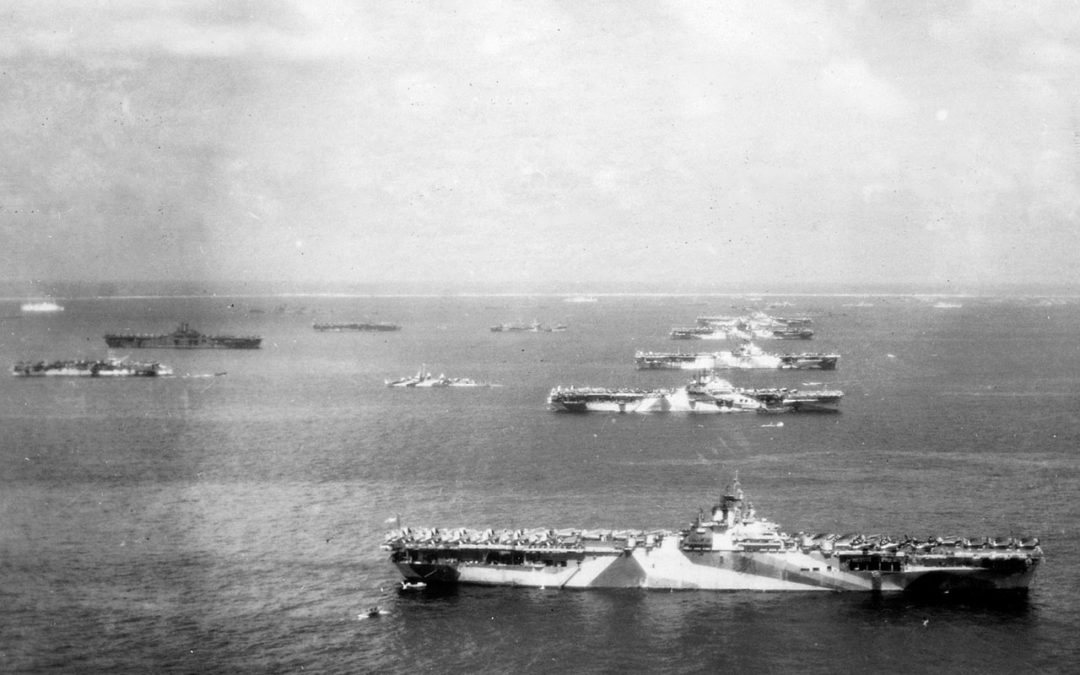
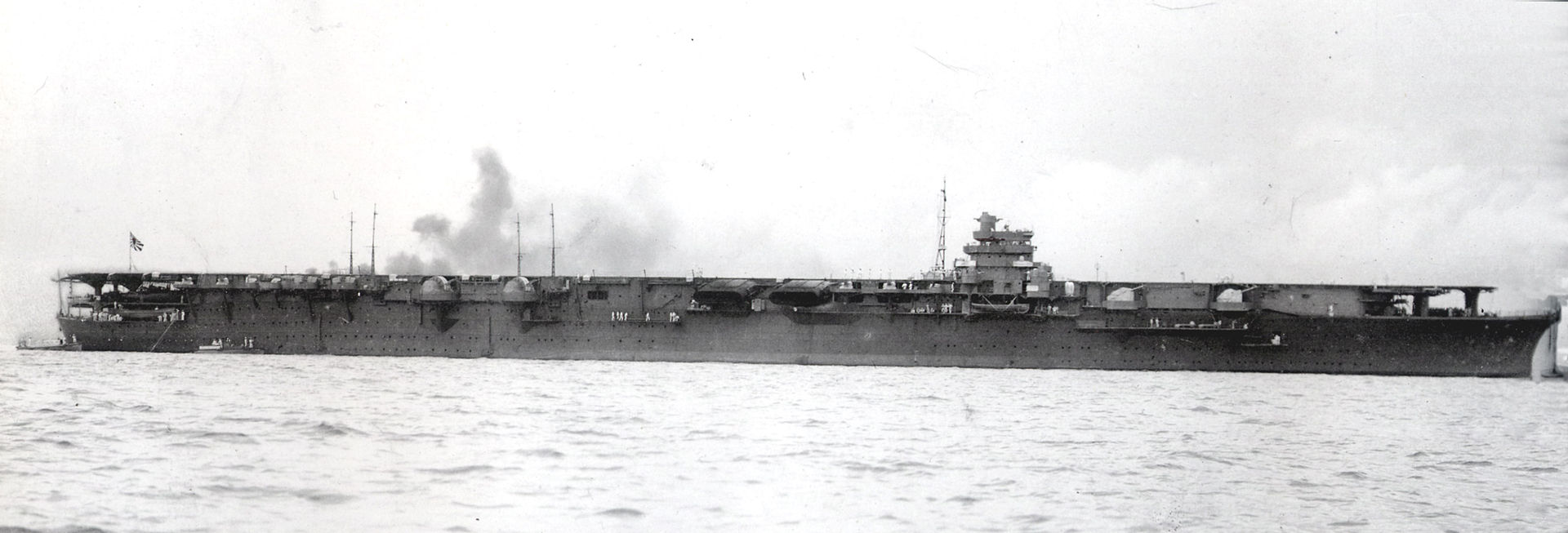
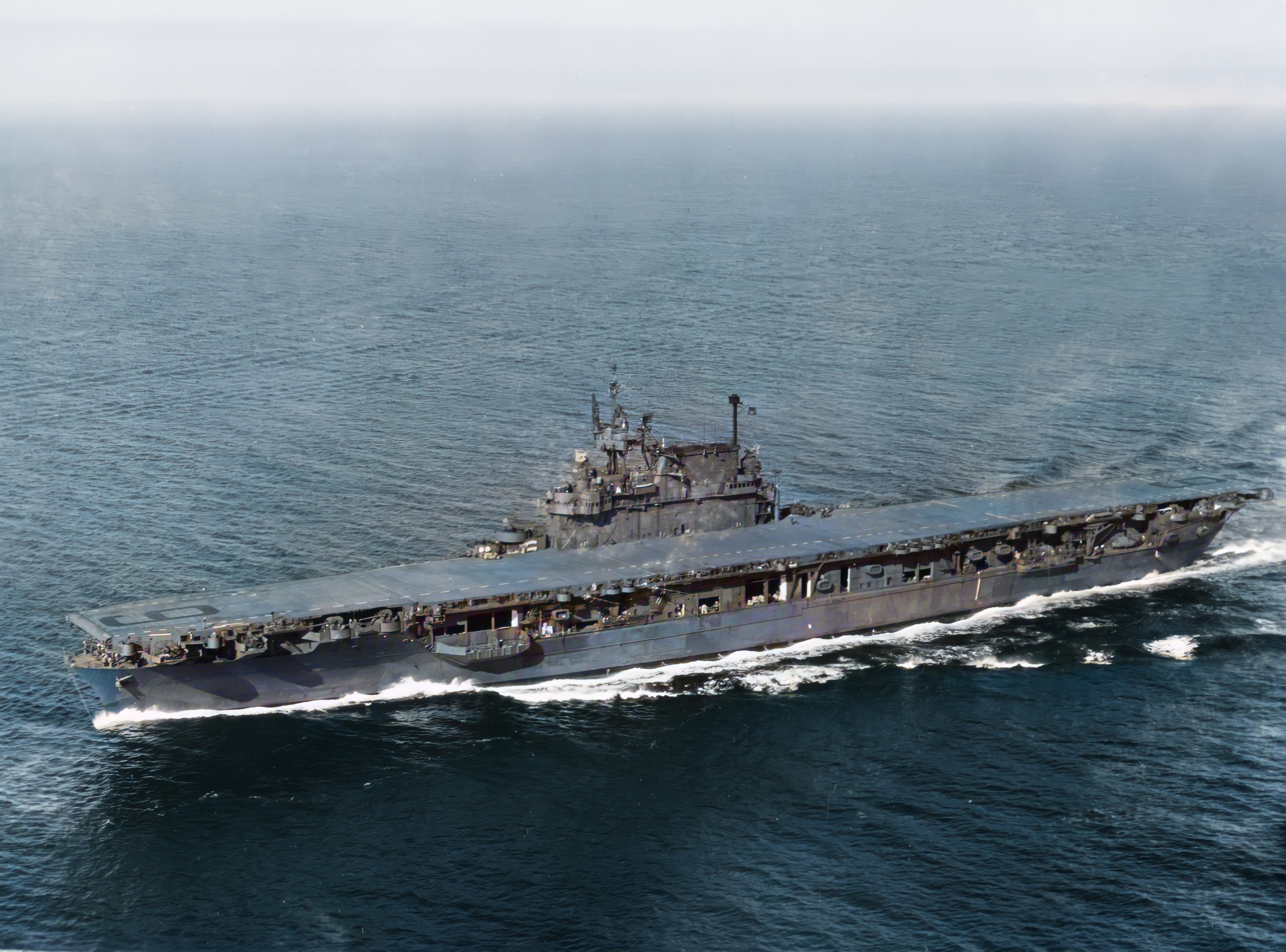
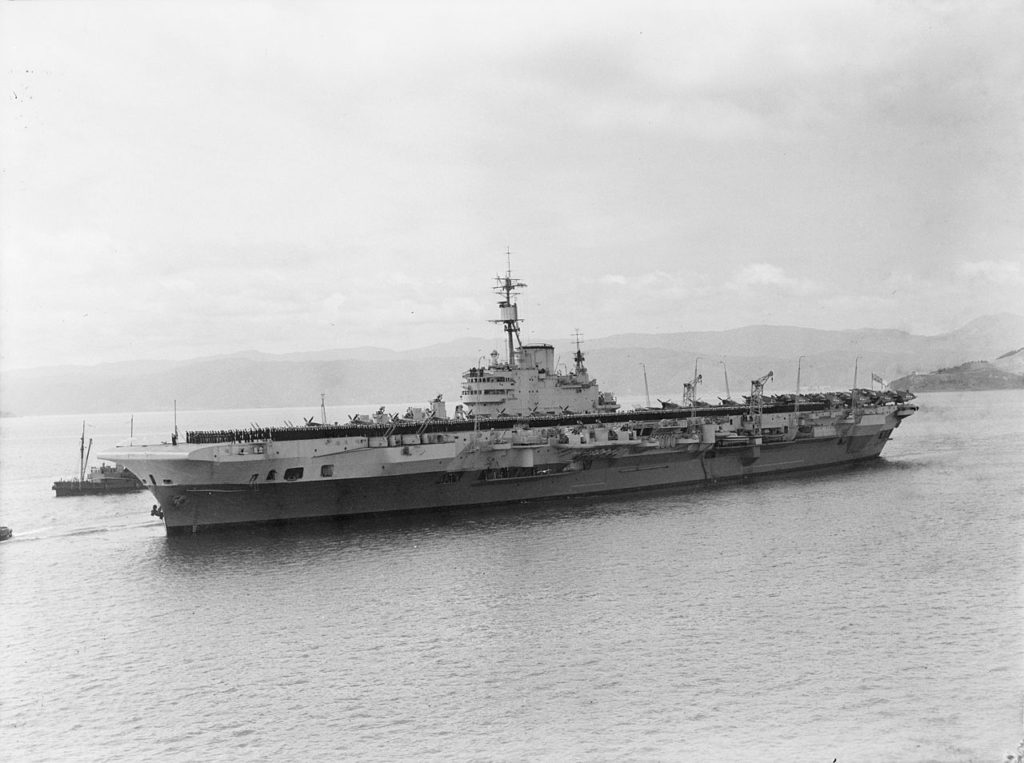
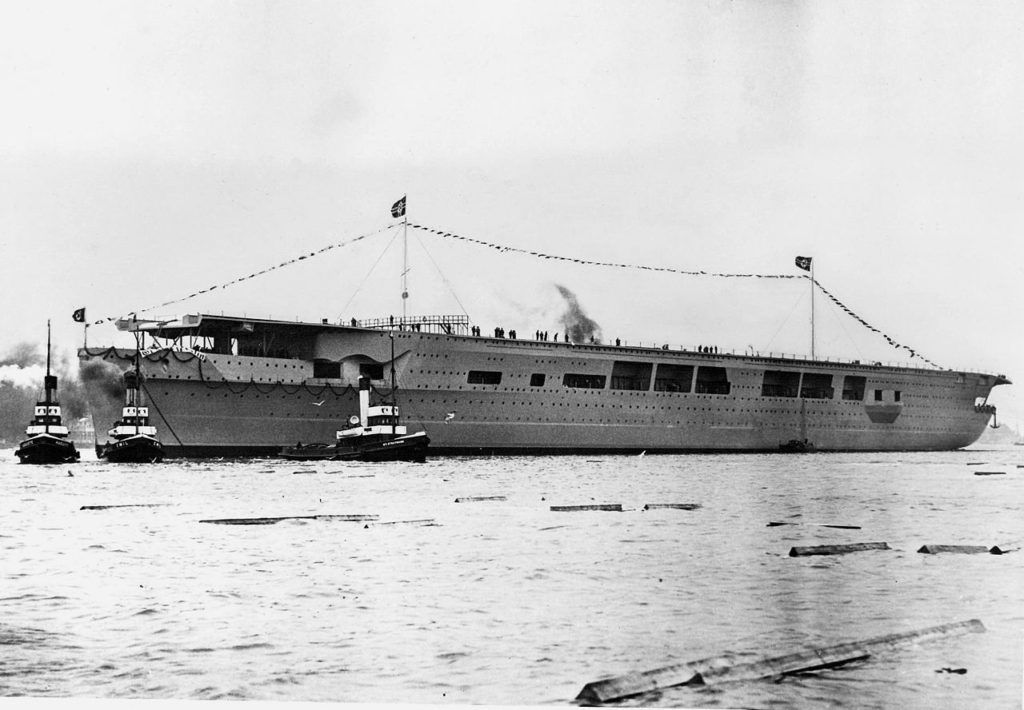
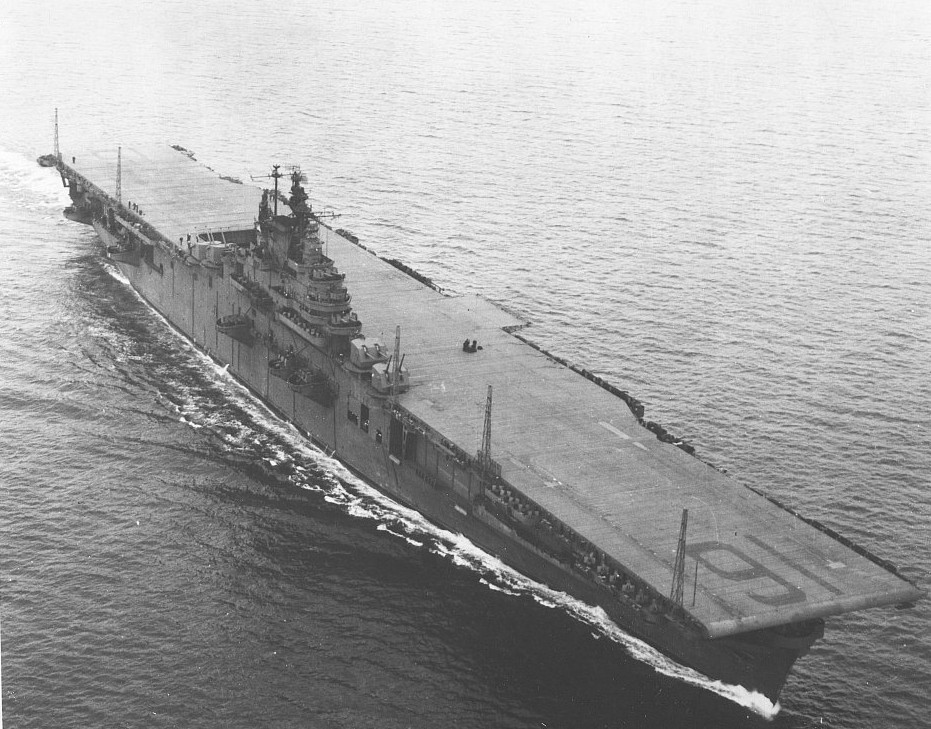

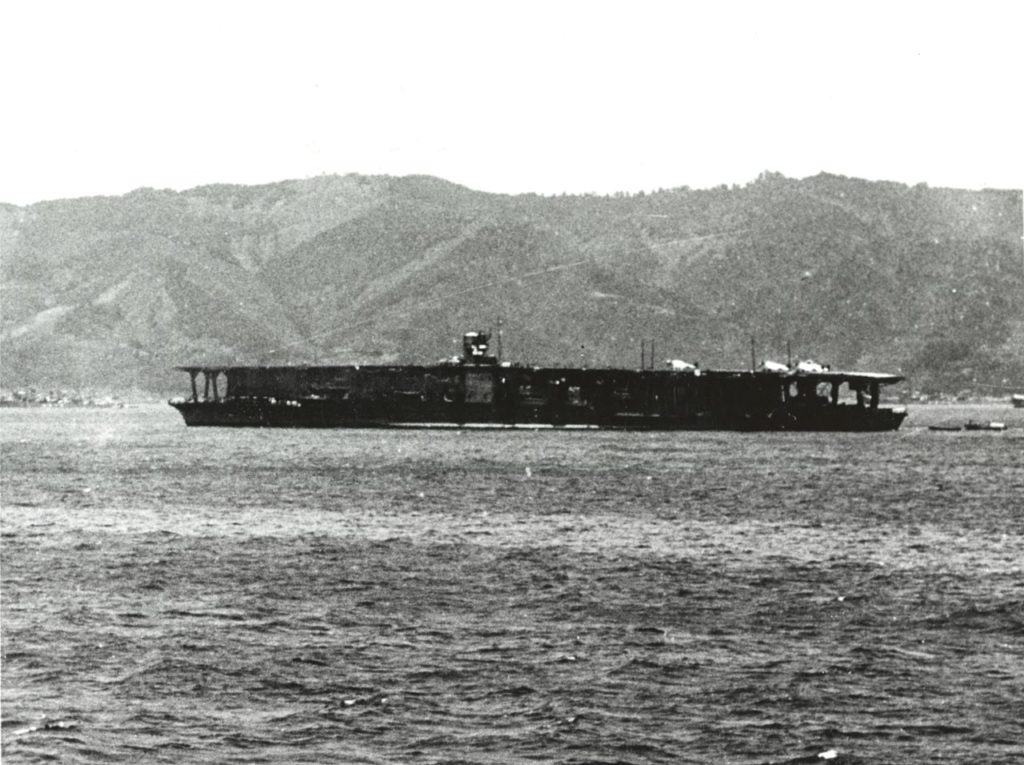
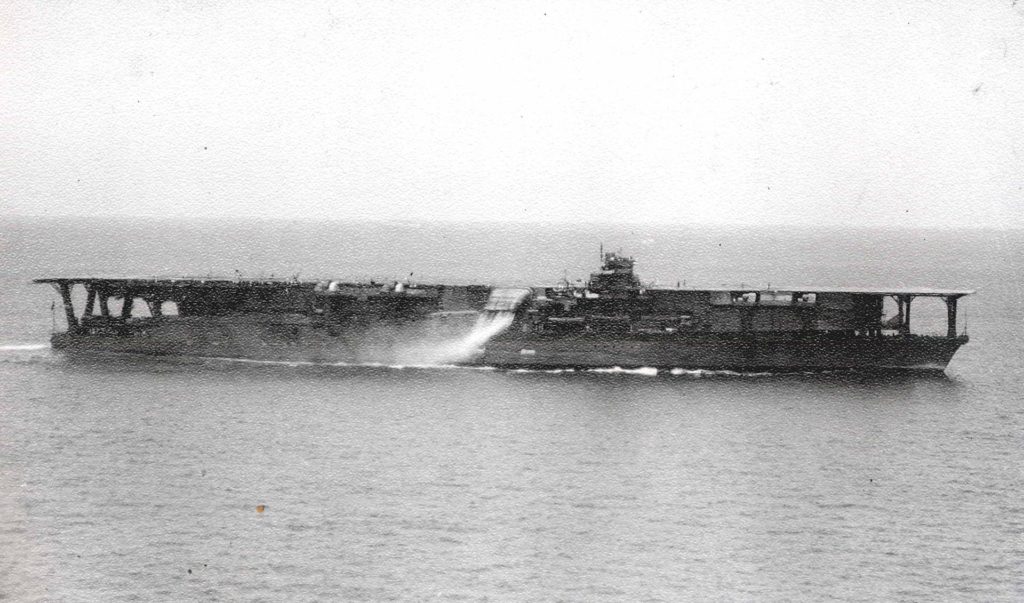
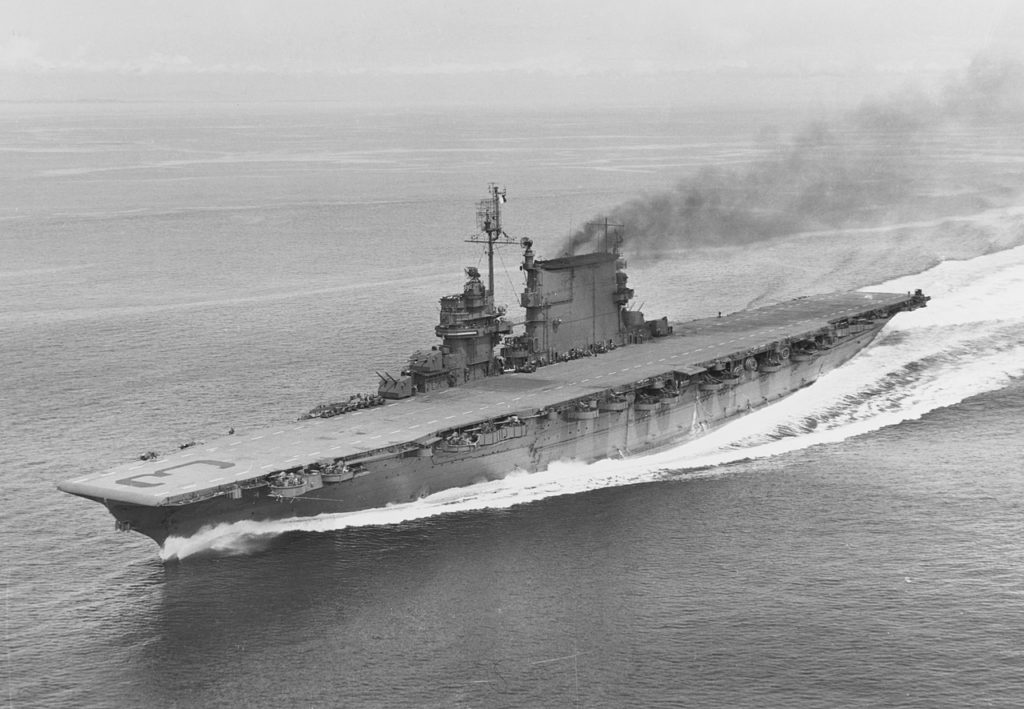
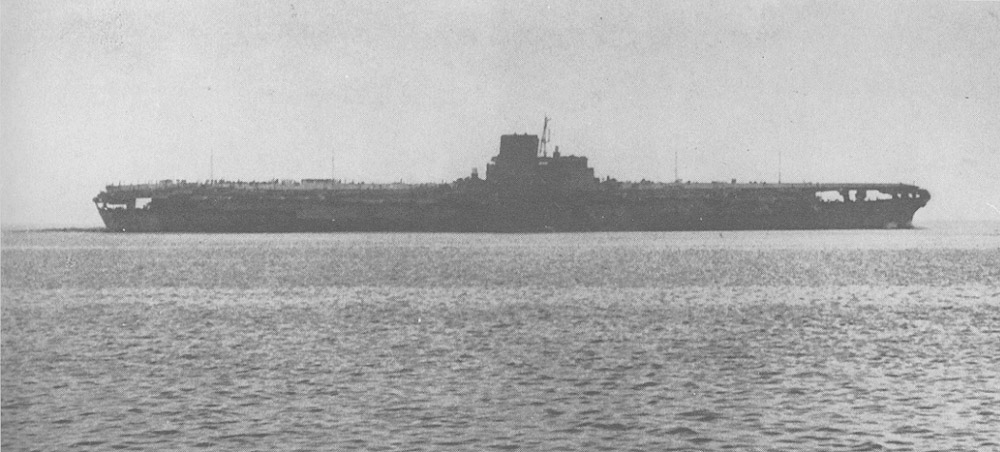

Recent Comments